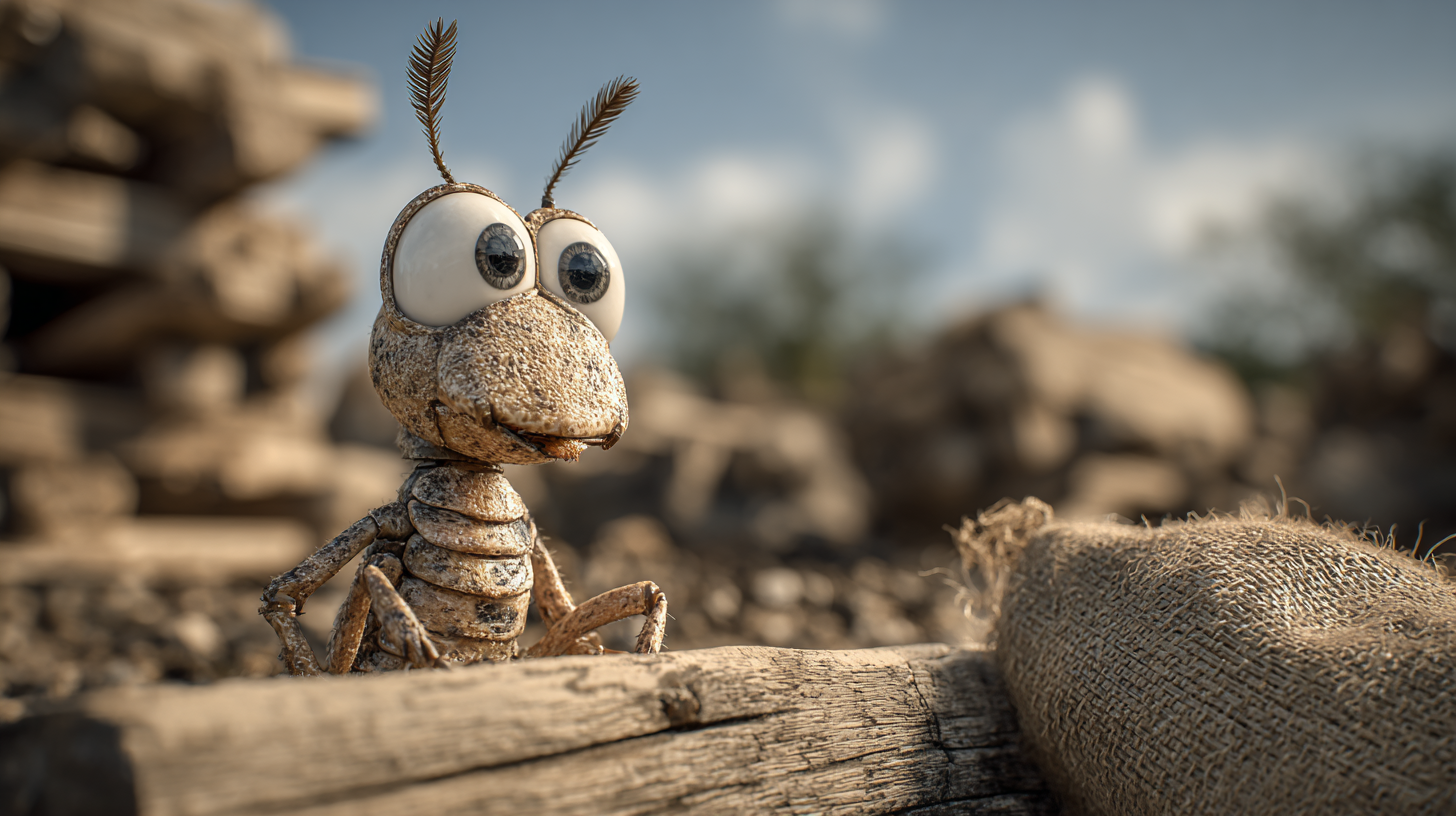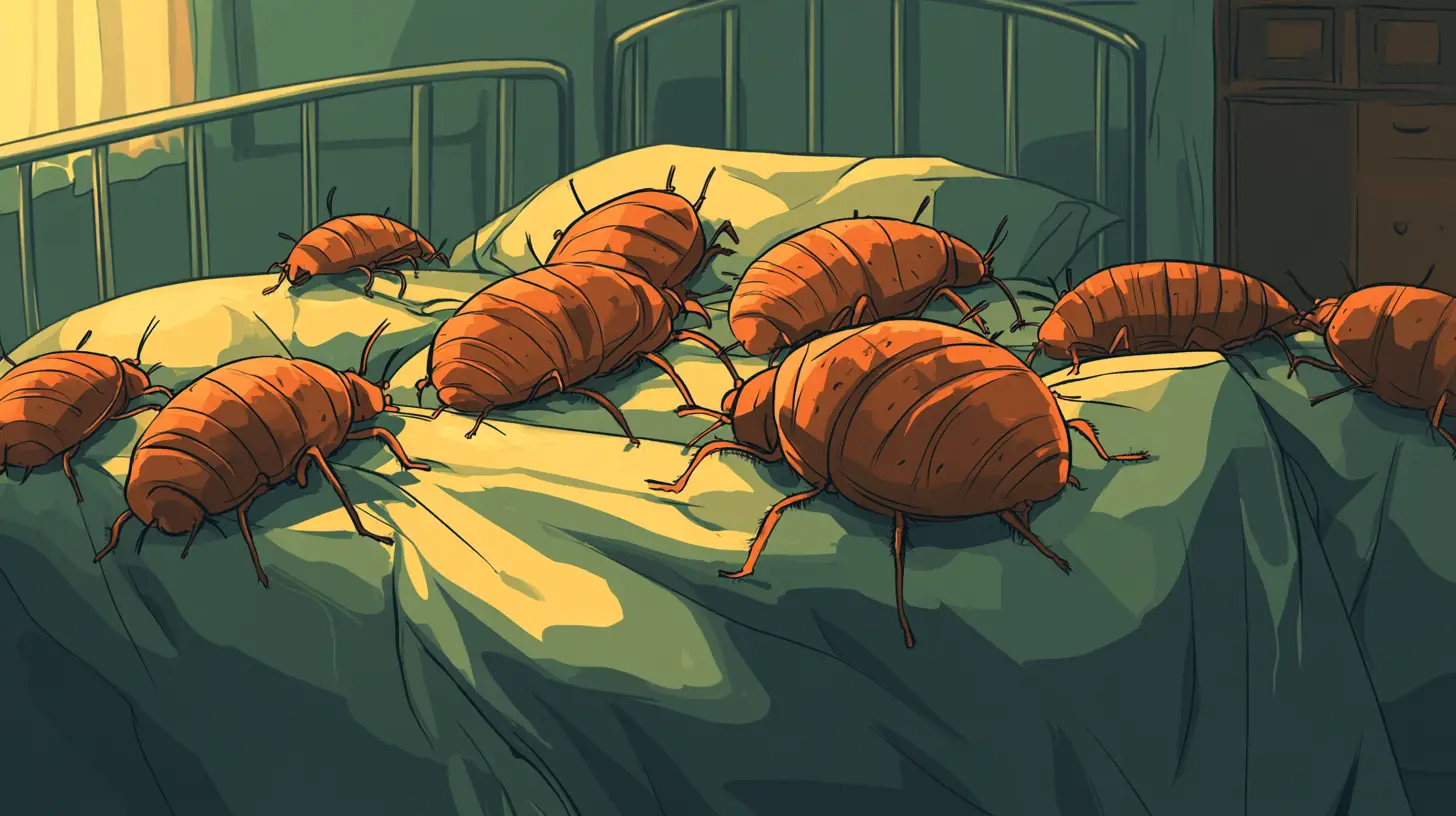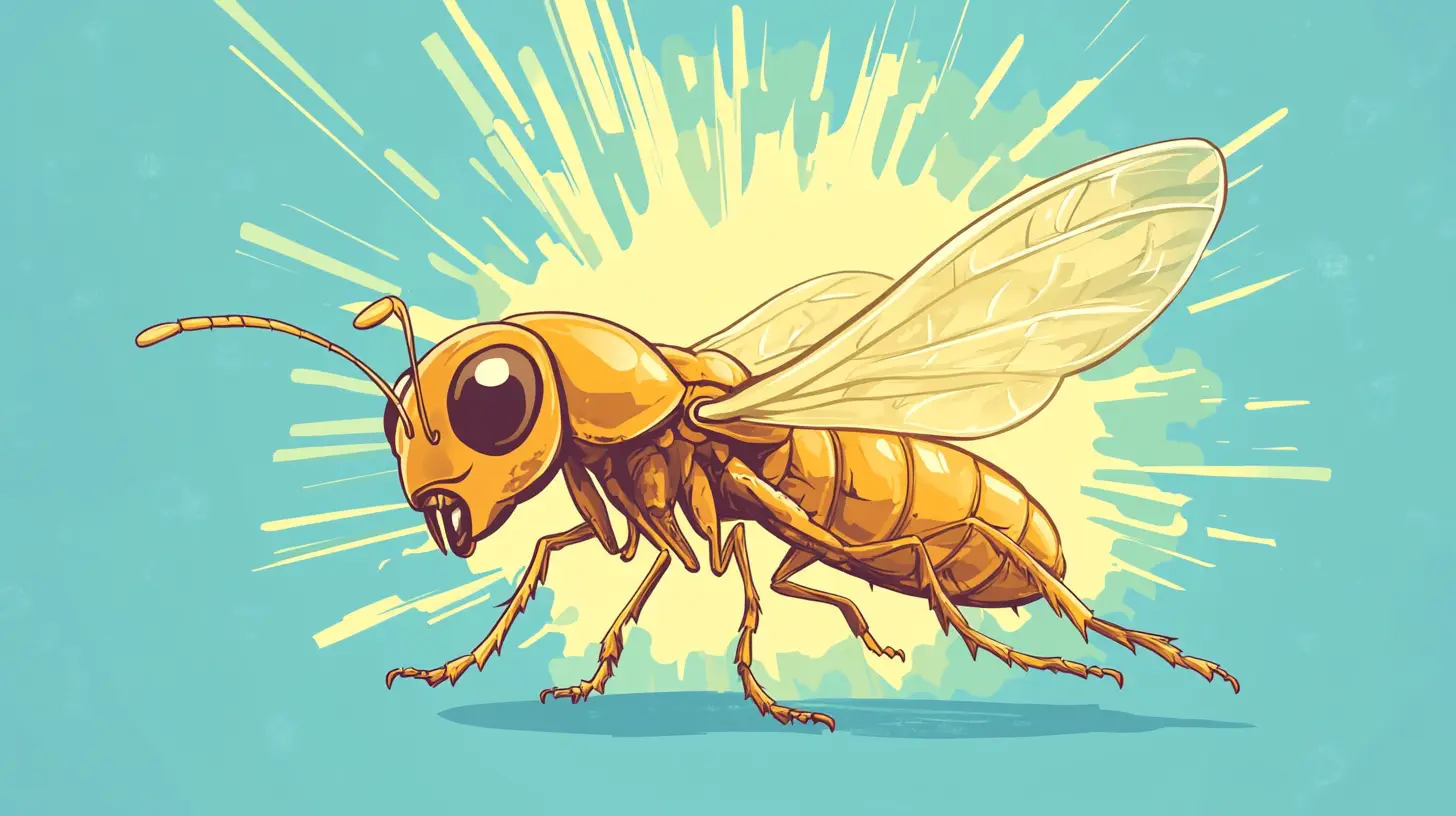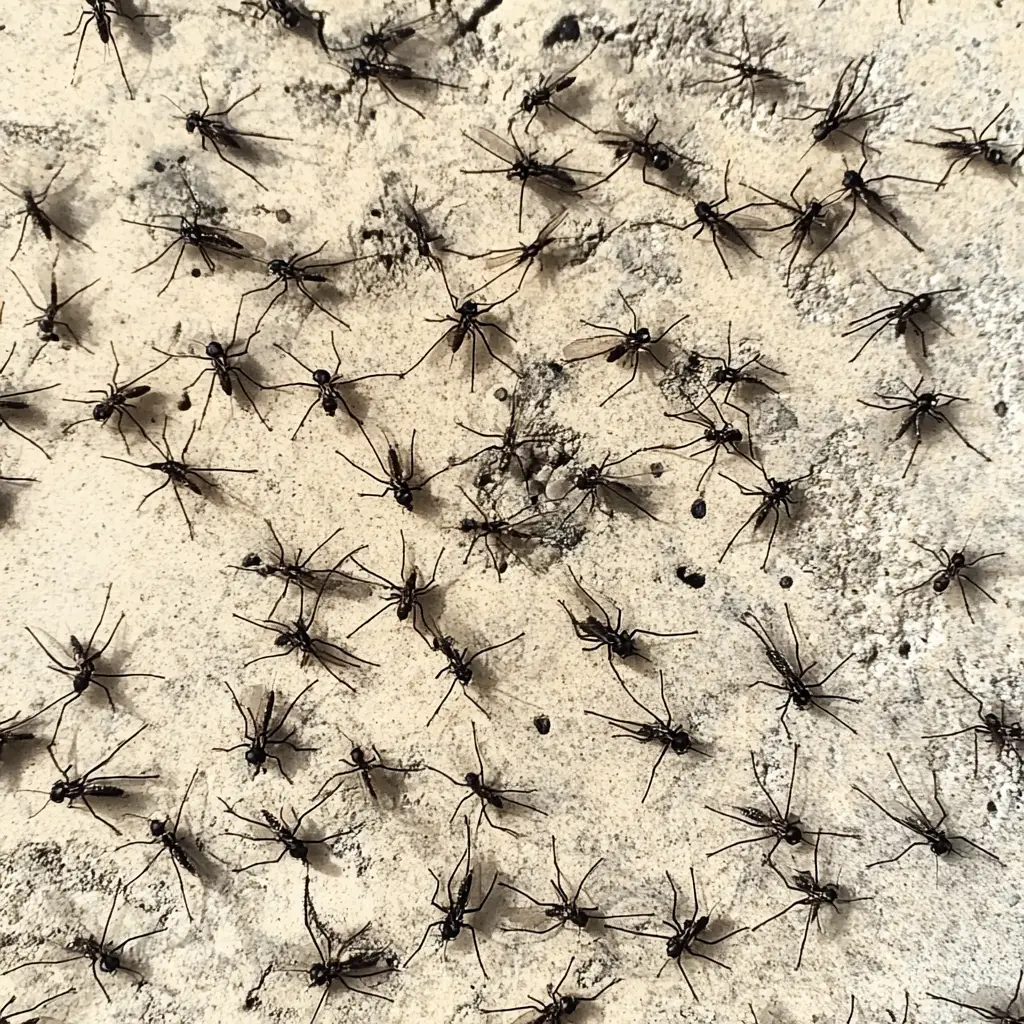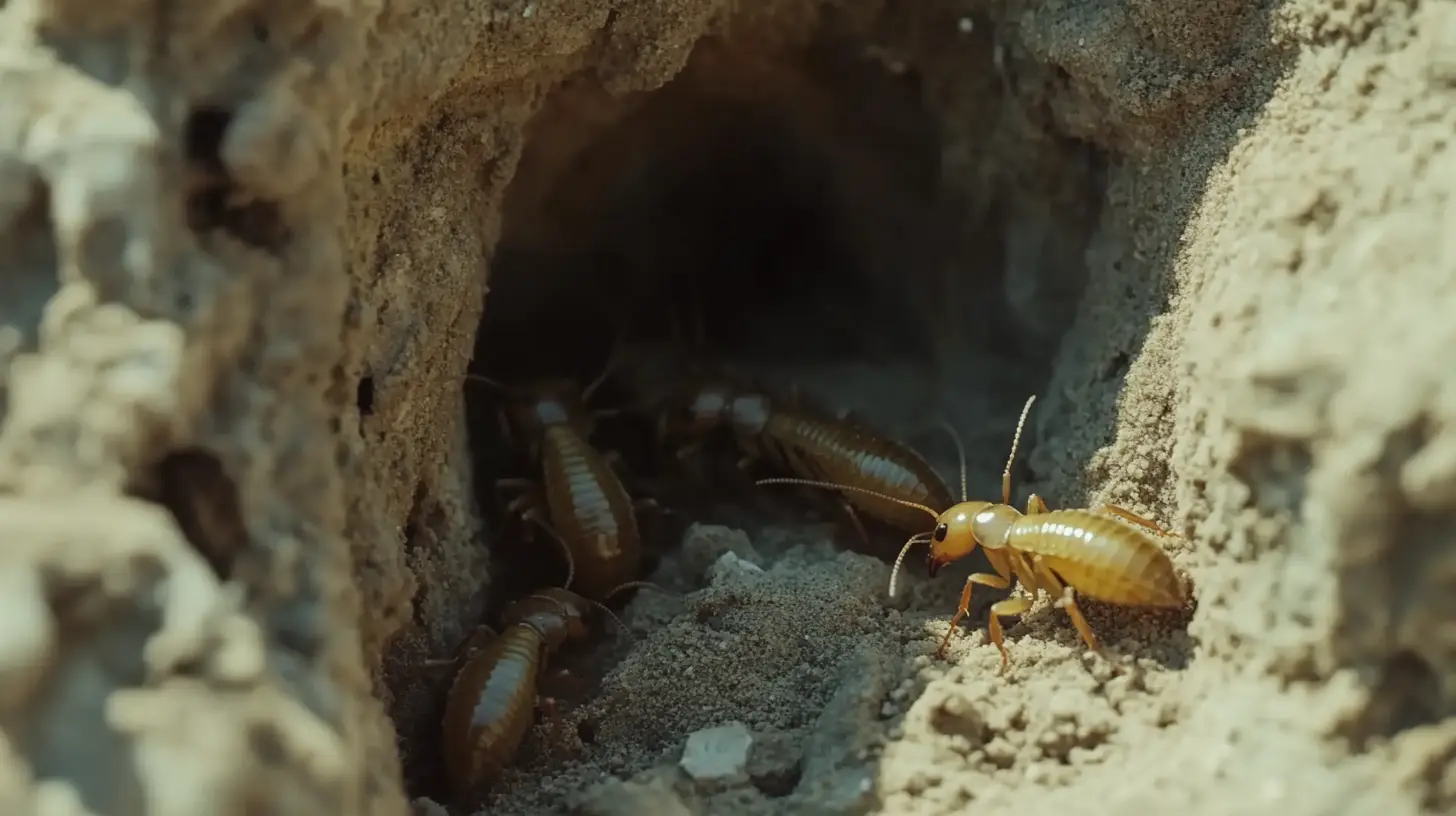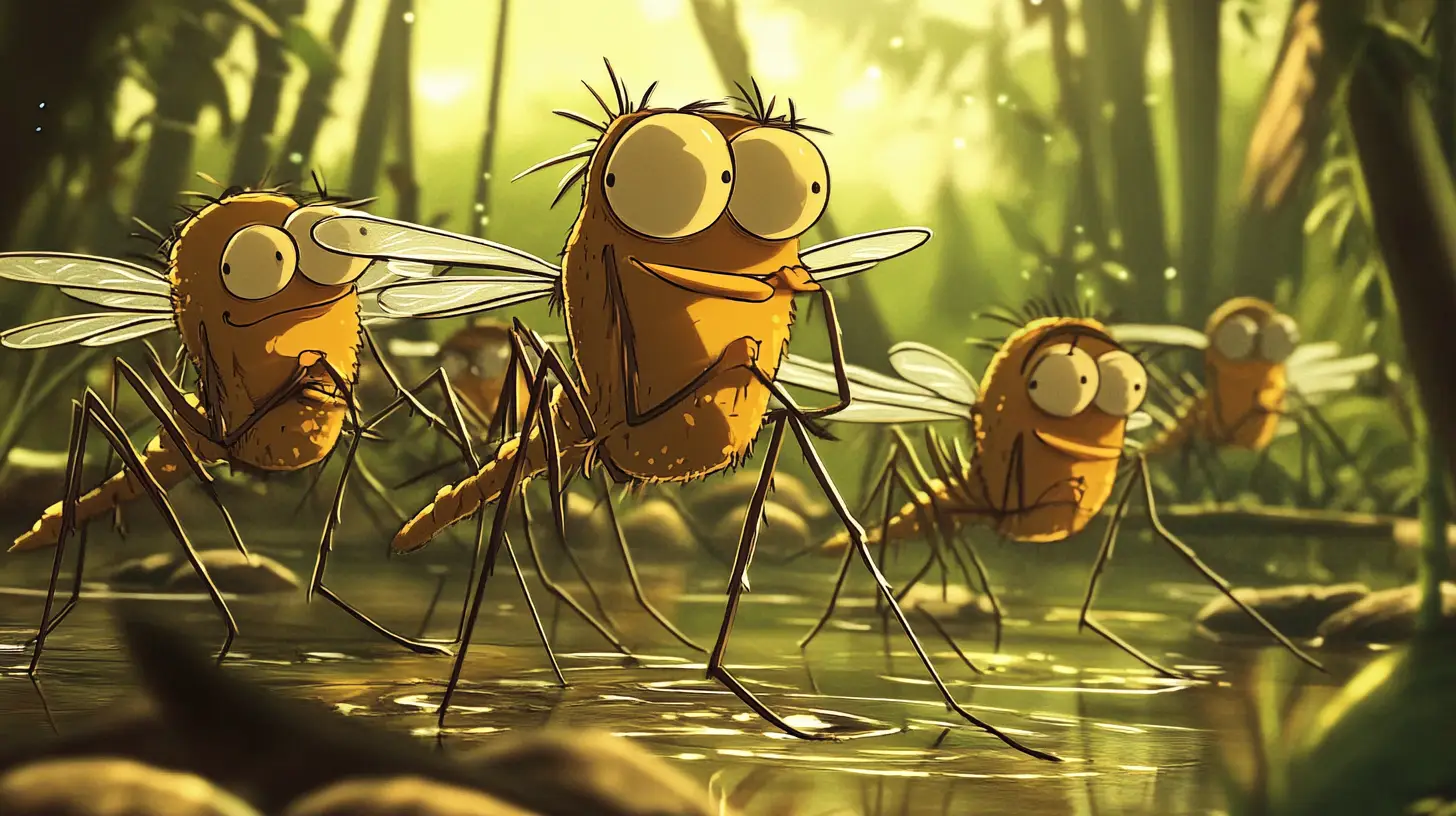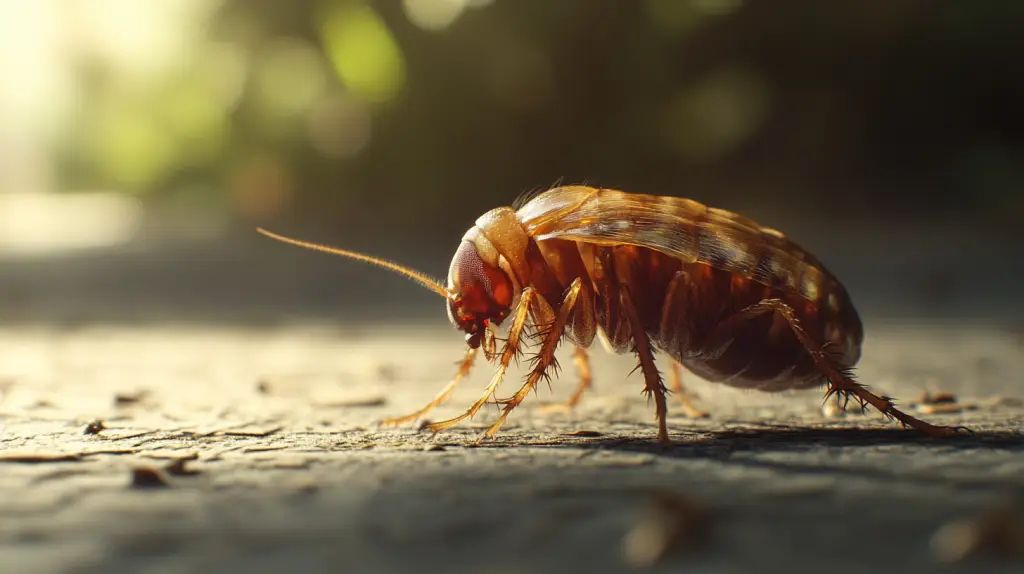
Table of Contents
Ever wondered why it seems like you’re constantly battling fleas in Florida? It’s not just your imagination. Florida’s unique climate is like a paradise for these pesky parasites. With average temperatures during spring and summer that are ideal for fleas and high humidity levels that accelerate their breeding cycle, it’s no wonder these critters are a year-round concern.
Unlike many northern states that enjoy a winter respite from fleas, Florida’s mild winters don’t provide such a break. In fact, fleas can survive in temperatures as low as 33 degrees, so the notion of freezing them out just doesn’t apply here.
So, when exactly is flea season in Florida? The surprising answer is – it’s always flea season. Fleas in Florida get to experience a continuous breeding cycle, making them an endless headache for pet owners and residents. But don’t worry! We’ve got some insights to help you tackle this issue.
Key Takeaways
- Florida’s unique climate, with high temperatures and humidity levels, provides an ideal habitat for fleas, making them a year-round problem.
- Fleas are ectoparasites that live on the exterior of their hosts and feed on their blood for survival.
- The most common types of fleas found in Florida are cat fleas and dog fleas, which are not exclusive to their namesake hosts but can latch onto a variety of warm-blooded animals.
- Regular pet grooming, the use of flea prevention products, and regular indoor cleaning and vacuuming are recommended strategies to prevent flea infestations in Florida.
- It is essential to seek immediate medical attention if symptoms of an allergic reaction, such as hives or difficulty breathing, occur after a flea bite.
- Combining various preventive strategies and maintaining consistency is the most effective approach in managing flea problems in Florida.
Overview of Fleas in Florida
As you may already know, fleas in Florida are more than just an annoyance; they’re a constant, year-round challenge. You see, Florida’s ideal temperatures and high humidity levels provide a perfect habitat for these blood-sucking critters, making flea infestations an ongoing issue. So, let’s shed some light on these unwanted guests, shall we?
Fleas, tiny as they might be, pack quite a punch when it comes to being pests. Measuring at just ⅛ in size, these reddish-brown parasites are nonetheless a force to be reckoned with. These wingless creatures come with six legs, equipped for that infamous jump they’re known for. And did we mention they’re laterally compressed? Now you know why they’re so hard to squash!
Fleas are not your regular pests, they’re ectoparasites, which means they live on the exterior of their host. And by host, we mean your beloved pet cat or dog, or even you! Warm-blooded hosts are their favorite, and it’s these hosts’ blood they feed on. Yes, you heard it right; they need to feed on blood to survive and reproduce. Isn’t that eww?
Being fans of moist, humid, and shady areas, these parasites find their paradise in Florida. Tall grass and shrubbery are their ideal locales, aligning well with Florida’s world. Often, they hop onto pets venturing into these areas and hitch a ride back home. The battle against fleas becomes a considerable challenge when you add up the suitable climate, abundance of hosts, and habitat preferences.
Vacuuming, commonly thought as a solution, is only partly against fleas. Sure, it’ll help reduce eggs, larvae, and adults along with the flea dirt but unfortunately, it leaves out those sticky pupae. So while it’s still a part of the solution, it’s definitely not the entire answer.
That brings us to a pondering end: If vacuuming doesn’t eliminate flea populations entirely, what will?
How does one effectively manage these stubborn pests, especially in a flea haven like Florida?
Common Types of Fleas Found in Florida
Experiencing a flea problem can be a frustrating ordeal for anyone, especially in Florida where these annoying pests are found in abundance. You’re not just battling one species of flea but various species, each with its unique characteristics. Understanding the common types can be your first step in an flea management strategy. Let’s jump into the specifics of the most commonly found types!
Cat Fleas
The name ‘cat flea’ can be a tad misleading. They don’t just latch onto cats, they’re non-discriminatory when it comes to hosts. Whether it’s a dog, human, chicken, rabbit, squirrel, rat, or mouse, cat fleas will gladly make a meal of their blood.
Distinctive features? They’re small – around 1/16 inch or 1.6 mm, their bodies are flattened from side to side and their legs are long, designed for jumping. They’re dark reddish-brown, wingless, and their bodies are shielded by many backward-directed hairs and short spines. Quite the meticulous bloodsucker, aren’t they?
Cat Fleas: Identification, Behavior, and Infestation Signs

Physical Characteristics
- Size: About 1/8 inch (2-3 mm) long
- Color: Brownish-black to black, reddish-black when full of blood
- Body shape: Laterally flattened
- Legs: Powerful hind legs for jumping
- Head: Small heads in females compared to body length
Distinctive Features
- Wingless but can jump large distances
- Rows of spines called “combs” on the body
- Genal comb placed horizontally below the head
- First two spines on the genal comb are of equal length
Behavior
- Prefer cats and dogs, but can bite humans
- Often found on the back near the tail
- Difficult to spot due to grooming habits of pets
Signs of Infestation
- Excessive scratching or grooming by pets
- Flea dirt in the pet’s fur
- Flea dirt appears as small black specks that turn reddish when wet
Life Cycle
- Eggs: White, oval-shaped, about 0.5 mm long
- Larvae: Worm-like and legless, feed on organic debris
- Pupae: Enclosed in silken cocoons
- Adults: Feed on blood and can live for several months
Cat fleas are common on pets and can be identified with a flea comb, especially near the back and tail. Consult a veterinarian for treatment and flea control methods.
When it comes to Florida’s fleas, cat fleas take the crown as the most frequently found species. Because of the state’s conducive climate, cat fleas have found a haven in the Floridian lands, making this more than just a summertime nuisance.
Dog Fleas
Dog Fleas are also common in the sunshine state. Taking a page out of their cousins’ book, dog fleas don’t limit themselves to just dogs for a blood meal. They’re quite adventurous in choosing their hosts.
Like cat fleas, they’re small, wingless, and possess a dark brownish-red body. Their bodies are lined with hair, helping them navigate through the fur of their hosts. The Florida heat only serves to increase dog flea populations, ensuring they’re a constant presence.
Dog Fleas: Identification, Signs, and Prevention

Physical Characteristics
- Size: About 1/8 inch (2-3 mm) long
- Color: Brownish-black to black, reddish-black when full of blood
- Body shape: Laterally flattened and wingless
- Legs: Powerful hind legs for jumping
Behavior
- Feed on the blood of dogs and other warm-blooded animals
- Can jump large distances
- Females lay 400-500 eggs during their lifetime
- Eggs hatch in 1-12 days
- Adults live for about 100 days
Signs of Infestation
- Excessive scratching, biting, or chewing at skin by dogs
- Small red bumps or bites on dog’s skin
- Presence of “flea dirt” in dog’s fur
- Hair loss or scabs on dog’s skin
- Visible fleas in dog’s fur, especially near the tail, lower back, and groin
Health Concerns
- Can cause flea allergy dermatitis in some dogs
- May transmit diseases like murine typhus
- Can cause anemia in severe infestations
Detection Methods
- Using a flea comb to check dog’s fur
- Parting dog’s hair to look for fleas on skin
- Checking for flea dirt on white paper towel (turns reddish when wet)
Prevention and Treatment
- Regular grooming and bathing of dogs
- Using flea prevention products recommended by veterinarians
- Treating the home environment (vacuuming, washing bedding, etc.)
- Consulting a veterinarian for severe infestations
Dog fleas are common parasites that cause discomfort for pets. Regular checking and preventive measures help manage flea infestations effectively.
Understanding these common types of fleas helps you become strategic in your flea management efforts. Ignorance isn’t bliss when it comes to these pests!
Preventing Flea Infestations in Florida
Just as it is with most things in life, when it comes to flea pest control in Florida, prevention is key. But how do you get a step ahead of these little unwelcome pests? Let’s investigate into some practical methods to keep fleas at bay.
Regular Pet Grooming
If you’ve noticed your pet scratching or biting their skin more than usual, chances are it’s an indication of flea bites. The best way to keep fleas away from your pets is to stop them from inviting themselves in the first place. Regular pet grooming becomes an indispensable part of this preventive approach. Bathe your pets regularly, using a flea comb to dislodge any lurking fleas and their eggs.
An important emphasis is on the word ‘regularly.’ Consistency is crucial since infrequent or sporadic grooming will not deter these persistent pests. For a more grooming regimen, pair your efforts with vet-approved shampoos, sprays, or powders that both cleanse and protect pets from fleas. It’s all about enforcing an iron-clad routine – after all, we’re dealing with pests that boast an impressive survival instinct.
Use of Flea Prevention Products
Plus to continuous grooming, another layer of protection comes in the form of flea prevention products. There is a wide array of preventatives available in Florida catering to every pet and their specific needs. From pills and topical solutions to flea collars, the choice is yours.
A consultation with your veterinarian will help pinpoint the most beneficial solution for your pet. An important factor to keep in mind is your pet’s lifestyle: the right flea prevention product should match it. Outdoor explorers and cozy homebodies will need different approaches.
Cleaning and Vacuuming Indoors
In the spirit of prevention, let’s not forget about the indoor environment. Fleas love to lurk in the comfort of carpets, furniture, and pet bedding. A major step in combating a flea infestation is regular cleaning and vacuuming in these areas.
Consistent sweeping, mopping, and vacuuming of your floors and furniture will not only remove adult fleas but their eggs too. Dedicate extra attention to your pet’s bedding. Washing it on a weekly basis in hot water can effectively kill off any flea eggs or larvae hiding out on it.
Establishing a main rest area for your pet and maintaining it regularly is an excellent additional prevention measure. A clean environment is your best friend in the bid towards ensuring your home remains a flea-free zone.
Managing fleas in Florida is not a one-time deal. Like the warm weather that they thrive in, your preventive efforts need to be ongoing. Good habits become your strongest defense against these relentless pests. With grooming, choice prevention products, and regular cleaning, resisting the itch becomes less of a challenge.
Dealing with Flea Bites in Florida
Fleas in Florida are more than just a minor nuisance; they can transform your leisure-filled sunny days into itchy nightmares. A flea bite is quite distinctive – remember those tiny, dark red spots surrounded by irritated, red haloes? Yes, they are the sinister deeds of these tiny pests.
Picture this: it’s a Saturday morning, you’re out in your backyard sipping iced lemonade, and out of the blue, you’re besieged by these wingless bloodsuckers. They’re long-legged, well-adapted jumpers, which makes your entire body an easy target. These 1/16 inch or 1.6 mm nuisances are not just experts on the hurdles; they’re agile skaters too, effortlessly moving through hair with their laterally compressed bodies.
The creepy part? The mouthparts of an adult flea are created for one purpose only: sucking blood. That’s right! That stubborn itch you can’t shake is a result of this miniature Dracula having its feast. Now the question stands – what’s your plan of action when you’ve been the choice buffet for Florida’s flea population?
First, resist the itch. Scratching exacerbates the problem, leading to infected bites. Clean the bite area with warm soapy water and apply an anti-itch cream or aloe vera to calm the irritation. If you notice symptoms of an allergic reaction such as hives or difficulty breathing, immediately seek medical attention.
Meanwhile, don’t let the fleas continue their rampage. Keep your home, especially your pets and their habitats, clean. Frequent vacuuming can significantly reduce the flea population indoors. Choosing vet-approved products for your furry friends can also keep the fleas in check.
In Florida, multiple species of fleas may reside on a single animal. Major culprits include the cat, dog, and sticktight fleas. Hence, a combination of strategies is often required for flea management.
In your fight against the Florida flea invasion, it’s essential to remember, diligence and consistency are your best allies. Because when it comes to fleas, it’s always better to prevent an infestation than to deal with one.
Frequently Asked Questions (FAQs)
Fleas detest strong odors such as eucalyptus, lavender, clove, citrus, peppermint, and citronella. That’s why cedar beds for dogs are so popular, given their inherent flea-repelling properties. The scent won’t kill fleas, but it will certainly repel them.
Can fleas live in your bed?
Fleas are known for burrowing into small, soft spaces like plush carpeting and bedding. However, without a food source, they won’t survive there for long. It’s more likely for fleas to inhabit your pet’s body or bedding than your sheets and blankets.
Why are Florida fleas so bad?
The humid, warm climatic conditions prevalent in Florida throughout much of the year make fleas a continuous nuisance for residents. Once infested, the only remedy is to resort to professional pest treatments like Bradenton Pest Control.
What instantly kills fleas?
Capstar (nitenpyram) is a fast-acting flea treatment tablet suitable for dogs and cats. It begins killing fleas in merely 30 minutes. A single dose of Capstar eliminates 90% of adult fleas within 4 hours for dogs and 6 hours for cats.
What kills fleas instantly in a house?
Here are some effective methods:
- Vacuum your home.
- Steam-clean carpets and furniture.
- Wash bedding in hot water.
- Spot-treat your home with an insecticide spray.
- Set up flea traps.
- Apply essential oils to afflicted areas.
- Sprinkle diatomaceous earth in corners.
- Use a flea comb on your pet.

